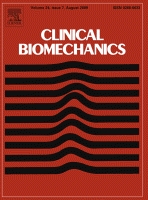已发表的论文

Myometry revealed medication-induced decrease in resting skeletal muscle stiffness in Parkinson’s disease patients
Authors: J. Marusiak, A. Jaskólska, M. Koszewicz, S. Budrewicz, A. Jaskólski
Affiliations: Department of Kinesiology, Faculty of Physiotherapy, University School of Physical Education, Wroclaw, Poland
Journal: Clinical Biomechanics (2012) (DOI: 10.1016/j.clinbiomech.2012.02.001)
Background
Based on combined analysis of clinical assessment of parkinsonian rigidity (constant resistance force generated during passive movement in a joint), electromyography and/or dynamometry many studies showed objectively that anti-parkinsonian medication decreases the rigidity in Parkinson’s disease (PD). Rigidity-related changes in resting muscle stiffness (changed muscle’s mechanical property related to its structural changes and changed neural drive) in PD patients have been revealed by myometry, a simple, sensitive, and reliable method for measuring mechanical properties in human soft tissues. However, an application of myometry in estimation of medication effects on the PD rigidity-related muscle stiffness has not been reported yet. Therefore, our study aimed to assess medication-induced changes in resting muscle stiffness in PD patients using myometry.
Methods
We measured resting muscle stiffness by myometry and recorded a surface electromyogram of relaxed biceps brachii, brachioradialis and triceps brachii muscles in ten patients with PD (age: 51–80 years; Hoehn and Yahr stage: 2.5–4) during medication on-phase (when subjects felt best comfort and fitness after medication: Levodopa, Piribedil, Ropinirol) and medication off-phase (12 h after withdrawal of the medication).
Findings
Our patients had significantly lower myometric stiffness and electromyogram amplitude in all tested muscles, and also lower clinical rigidity scores during the medication on-phase compared with the medication off-phase.
Interpretation
Myometry revealed that anti-parkinsonian medication decreases not only rigidity in PD, but also rigidity-related stiffness in resting skeletal muscles in PD patients. These findings show that myometry can enrich neurological practice, by allowing objective and reliable assessment of parkinsonian rigidity treatment effectiveness.
We conclude that myometry is a sensitive enough method to show that anti-parkinsonian medication decreases rigidity-related resting skeletal muscle stiffness in PD patients.


